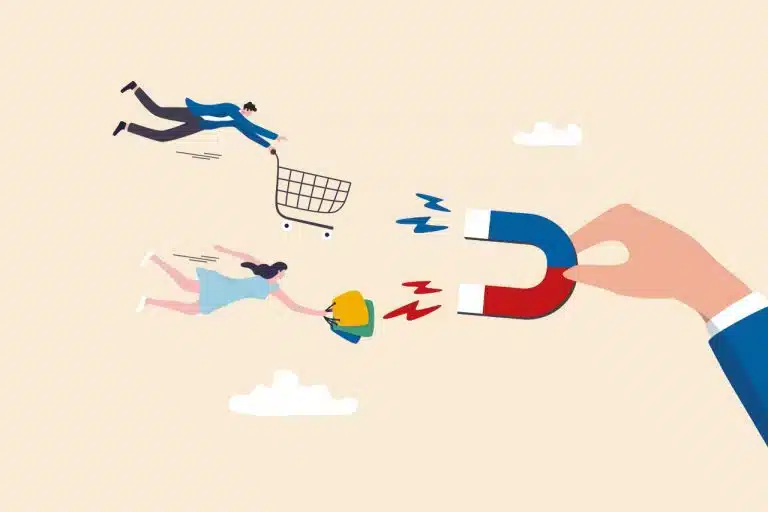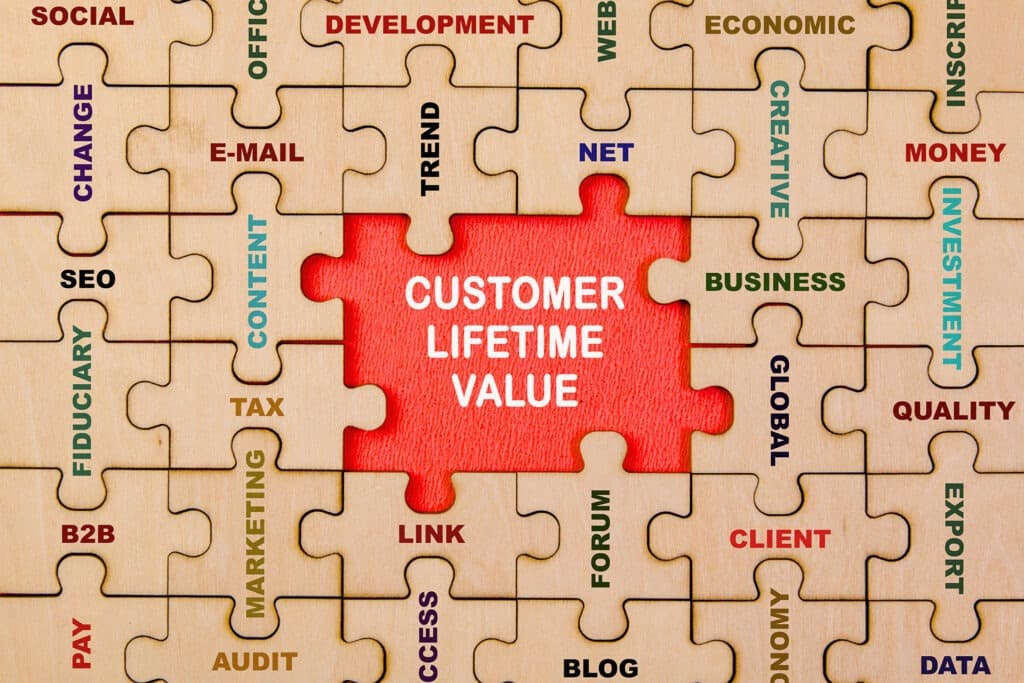What is Customer Lifetime Value (CLV)?
Customer Lifetime Value describes the total value that a customer generates during their relationship with a company.
In contrast to short-term key figures such as turnover per transaction, CLV helps to take a long-term perspective.
Companies can use it not only to evaluate the effectiveness of their current marketing strategies, but also to make well-founded decisions for the future.
The advantages of CLV in marketing
1st advantage: Targeted customer acquisition and retention

The CLV enables companies to strategically align their investments in customer acquisition and customer retention.
Customers with a high potential value can be identified and addressed with targeted measures.
This not only increases profitability, but also promotes the sustainable development of customer relationships.
2nd advantage: Effective customer segmentation
CLV analysis allows customers to be categorized according to their potential value.
This segmentation helps to develop personalized marketing campaigns that are tailored to the needs and preferences of the most valuable customer groups.
This makes more efficient use of marketing efforts.
3rd advantage: Optimization of customer loyalty strategies
A high CLV is the result of strong customer loyalty.
Companies can use targeted measures such as loyalty programs, exclusive offers or improved customer service to sustainably increase the loyalty and satisfaction of their customers.
4th advantage: Forecasting future sales
The CLV provides insights into the long-term sales development of a company.
It helps to forecast future earnings, minimize risks and ensure the stability of the business model.
5th advantage: Improved ROI in marketing

By focusing on customers with a high CLV, companies can significantly increase the return on investment (ROI) of their marketing activities.
Resources are deployed in a more targeted manner, which increases efficiency and financial success.
6th advantage: Increased competitiveness
CLV gives companies a competitive advantage by enabling them to carry out a well-founded customer analysis.
Companies that use CLV are in a better position to react to market changes and hold their own against the competition in the long term.
Conclusion: CLV as a strategic instrument for sustainable success
Customer Lifetime Value is much more than just a key figure: it is an essential strategic tool for modern marketing.
By focusing on the most valuable customers, companies can deploy their marketing resources efficiently, strengthen long-term customer loyalty and increase their competitiveness.
By opening up long-term perspectives, CLV not only helps companies to achieve short-term profits, but also to create a sustainable basis for future growth.
Those who use CLV consistently not only understand their customers better, but also pave the way for sustainable business success.




